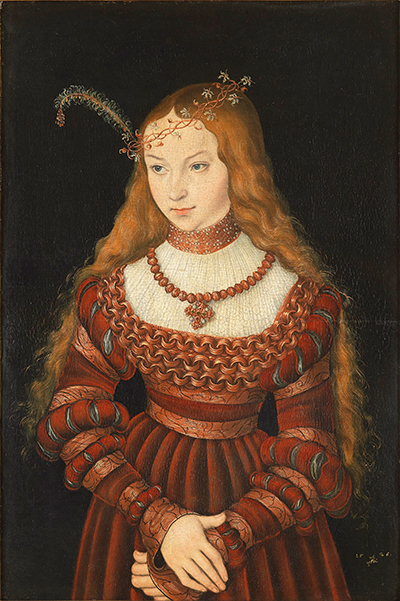Lucas Cranach the Elder produced several portraits of Sibylle of Cleves, with this painting being completed in 1526.
Sibylle of Cleves would have been aged only 14 at the time of this portrait. It was commissioned in order to celebrate the point of her betrothal to Electoral Prince John Frederick, as indicated by the title of the piece. She would later become the Electress of Saxony in 1532, a position that she would hold until 1547. Cranach himself served as a court painter and this enabled him to receive a number of high profile commissions fron notable figures, such as the portrait found here. This also led to the dominance of this genre within his career, though he did still find time over the years to produce a number of significant landscape paintings and others inspired by themes of religion and mythology.
Sibylle may have been betroved as early as September, 1526, but her marriage to Electoral Prince John Frederick of Saxony would not actually happen until the 9th of February of the next year. A whole series of complex negotiations were necessary before this point in order to get the final agreement of all parties. At this stage in European history, the most well connected families would use marriage as a method of establishing stronger business and financial roots as well as protecting their own existing interests. Romance was rarely a priority during these times. Despite that, the two were to become a close couple who remained loyal throughout. They had four sons together. After a period of separation due to war, they would be reunited before both passing away at about the same time.
Looking at the artist's painting itself, she is clearly a pretty model for the artist to portray at this point. Her later portraits were not as kind. She wears delicate jewellery including a necklace. Her clothing is attractive and detailed but also well made and strong. Her hair is tidy but relatively simple, hanging down to each shoulder. There is some small headwear too. Her modest outfits are replaced in later years by more complex attire which reflects her raised profile in society as a result of this marriage and later circumstances.




